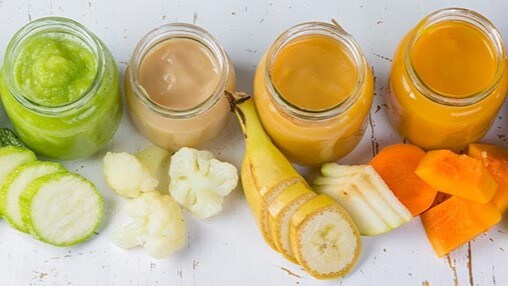At a glance
Your child needs a variety of foods for proper growth and development. Healthy eating patterns that your child starts now will help promote healthy eating habits in the future.

Foods to encourage
Offer your child a variety of fruits, vegetables, whole grains, proteins, and dairy products. Consider making a rainbow of different-colored foods on your child's plate. Here are a few examples:
- Fruits: bananas, strawberries, pears, oranges, melons, or avocados.
- Vegetables: cooked spinach, carrots, beans, peas, lentils, yams, or beets.
- Whole grains: whole grain breads, crackers, or pastas.
- Proteins: soft, small pieces of beef, lamb, chicken, fish, turkey, eggs, or tofu.
- Dairy: pasteurized cheeses or yogurts, including soy-based yogurt.
Once your child is 12 months old, they may be eating more of the foods that you eat. Eating a healthy diet sets a good example for your child. Continue to offer a variety of healthy options and allow your child to choose foods to eat.
Use the MyPlate Plan tool for guidance on what and how much your child should eat each day. For ideas on different meals or snacks for your child, visit the USDA's MyPlate Recipes page.
Drinks to encourage
If your child is 6 to 12 months old, you can offer them:
- Breast milk (if you are still breastfeeding) or infant formula.
- Water (4 to 8 ounces a day).
Cow’s milk and milk alternatives
Once your child is 12 months old, you can begin offering pasteurized, plain whole cow's milk or fortified, unsweetened soy drinks. Once your child is 24 months old, start serving them low-fat (1%) or fat-free dairy milk.